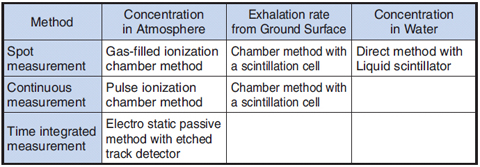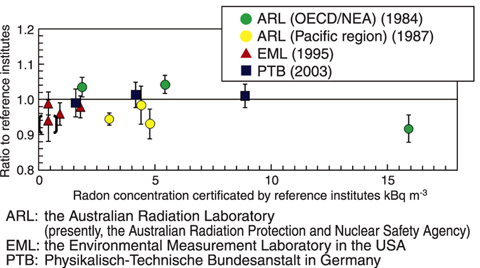
Fig.14-27 Concept of traceability of radon measurements at JAEA Ningyo-toge
Table 14-2 Radon measurement techniques used at JAEA Ningyo-toge


Fig.14-28 Summary of intercomparison experiments among international reference institutes
Closed uranium mine sites are managed at JAEA Ningyo-toge and JAEA Tono. Radon (radon-222), a naturally occurring radioactive noble gas, is the immediate decay product of radium-226, one of progeny nuclides of uranium-238. For environmental assessment of uranium mine sites, radon is one of the most important nuclides to monitor, due to its atmospheric dispersion.
Assurance of the accuracy expected in measurement results is realized by traceability. That is, the monitors should be relating to a national standard or an international standard by an unbroken chain of comparisons. However, there is neither the calibration method established by the Japanese Industrial Standard nor the national reference field. Thus, we are performing radon studies on measurement techniques and their traceability mainly at JAEA Ningyo-toge, to validate reliability and accuracy of measurements objectively.
The concept of the traceability system created at JAEA Ningyo-toge is shown in Fig.14-27. The primary standard is a radium solution provided by the National Institute of Standards and Technology in the US, and the secondary standard is a method utilizing gas-filled ionization chambers calibrated with this solution. Other monitors standardized as shown in Table 14-2 are related to the secondary standard. A radon reference chamber, the main facility for maintenance of traceability, was developed to provide reference atmospheres for testing of instruments, and has been operated since 1992. Major results of evaluation of these activities are as follows.
(1) It was proven theoretically and experimentally that the above method utilizing a gas-filled ionization chamber provides highly accurate and stable measurement of radon in the environment.
(2) Through intercomparison experiments among the international reference institutes, it was confirmed that the reliability and consistency of our measurement techniques has been retained since 1984 (Fig.14-28).
(3) It was objectively demonstrated that the calibration and measurement techniques at the JAEA Ningyo-toge were maintained well by the traceability system which we constructed.
Radon is widely distributed in the environment, even in residences, because radium-226 is naturally contained in soil and in building materials. Moreover, radon is also important in the issues of naturally occurring radioactive materials and uranium waste disposal. Therefore, radon-related issues are being watched domestically and internationally with keen interest. Our systematic activities and experiences are contributing to Japanese standardization of radon measurements.